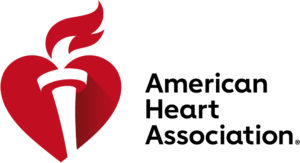It should come as no surprise that the spaces we occupy every day have a huge impact on our overall wellness. The Environmental Protection Agency and Vancouver Coastal Health report that Americans and Canadians spend about 90% of their time indoors. But what about the time we spend outdoors?
Your Welcoa membership has expired.
Life’s Simple 7® Journey to Health™
Contributed by: Heather Gavras on behalf of the American Heart Association.
Ninety-nine percent of the U.S. adult population has at least one of seven cardiovascular health risks. The combination of these risk factors increases employer medical spending by more than 200 percent per person annually. Improved heart health benefits both employees and employers. Healthy, engaged employees are more productive, with lower absenteeism and lower healthcare costs.
Life’s Simple 7 health behaviors represent seven out of the top 10 most costly risk factors that people can improve through lifestyle changes. These risk factors comprise 20-30 percent of companies’ annual healthcare expenditures. Taking small, simple steps toward improving these factors can add up to big differences in overall health: maintaining ideal levels for at least five of Life’s Simple 7 behaviors cuts risk of heart-related death by more than 50 percent.
Manage your heart risk by understanding Life’s Simple 7:
1. Stop smoking
Whatever it takes for you to stop smoking, it is worth it! Visit the American Heart Association’s Quit Smoking website for tools and resources.
2. Eat better
Want more ways to eat better? Try these tips:
- Track what you eat with a food diary
- Eat vegetables and fruits
- Eat unrefined fiber-rich whole-grain foods
- Eat fish twice a week
- Cut back on added sugars and saturated fats
3. Get active
Start by learning the basics about fitness. Also, children need 60 minutes a day–every day–of physical activity, so find ways to workout with your kids to help improve their heart health as well as your own.
4. Lose weight
Calculate your body mass index (BMI) to help you determine if you need to lose weight.
5. Manage blood pressure
If your blood pressure is lower than 120/80 mm Hg, you have normal blood pressure. If not, your results could indicate elevated or high blood pressure.
To manage blood pressure, you should:
- Eat a heart-healthy diet, which includes reducing sodium
- Get regular physical activity and maintain a healthy weight
- Manage stress, limit alcohol and avoid tobacco smoke.
6. Control cholesterol
Get your cholesterol checked and talk to your healthcare provider about your numbers and how they impact your overall risk. Try these tips to lower cholesterol with diet and foods.
7. Reduce blood sugar
The following tips can all help reduce your blood sugar:
- Reduce consumption of simple sugars that are found in soda, candy and sugary desserts
- Get regular physical activity! Moderate intensity aerobic physical activity directly helps your body respond to insulin
- Take medication or insulin if it is prescribed for you
The American Heart Association Workplace Health Achievement Index is a comprehensive organizational self-assessment that measures both the health of your workplace and the health of your workforce. The Index uses performance measures built around the Life’s Simple 7 factors.

Life’s Simple 7® Journey to Health™ leverages the powerful science of Life’s Simple 7 across workforces and dependents with a suite of integrated tools and services: Life’s Simple 7 portal for education and enhanced awareness; biometric screenings with multiple options; integrated Life’s Simple 7 health assessment with robust consumer lifestyle behavior guidance; incentives tracking and management; expanded online reporting, insights and analytics; and aggregated data reporting to meet the performance measures requirement under the Workplace Health Achievement Index.
Start your journey today at heart.org/workplacehealth.

About the American Heart Association // The American Heart Association is devoted to saving people from heart disease and stroke – the two leading causes of death in the world. We team with millions of volunteers to fund innovative research, fight for stronger public health policies, and provide lifesaving tools and information to prevent and treat these diseases. The Dallas-based association is the nation’s oldest and largest voluntary organization dedicated to fighting heart disease and stroke. To learn more or to get involved, call 1-800-AHA-USA1, visit heart.org or call any of our offices around the country. Follow us on Facebook and Twitter.




